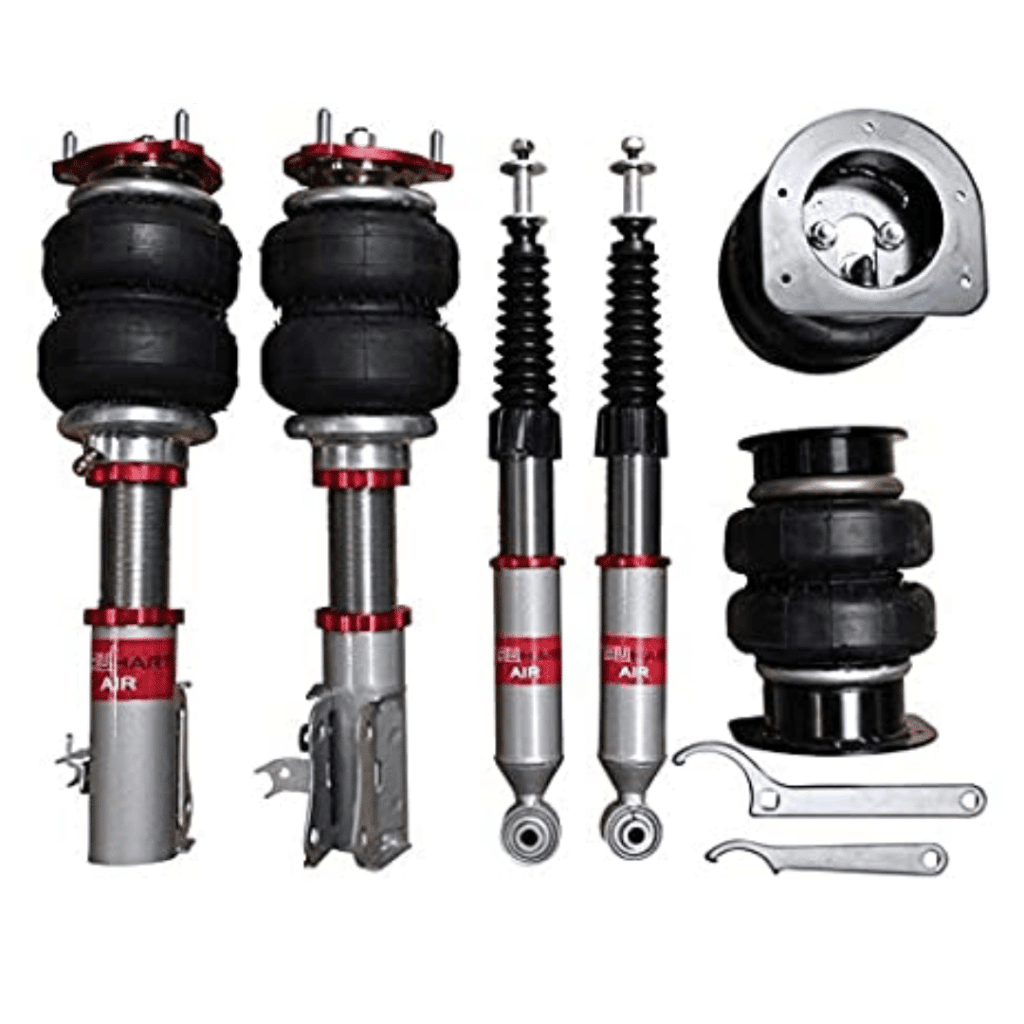The battle between air suspension vs spring
“Air springs reduce a great amount of vibration, elongating lifetime on the overall vehicle and the road system. The drawbacks to air springs leave room for sping systems, like the camelback, to take place as the overall superior choice, in terms of general scope.”
Air springs reduce the vibration going out. This less vibration going out means less damage to bridges, buildings, and roads. To make a serious impact, every vehicle would need to be air suspended.
The vibration from the road is less vibration on your vehicle. This means a healthier frame, bolts, motor mounts, and pretty much every part of the vehicle subject to bounce on the road. It’s not always the big potholes that do the damage, it’s the 1,000 roads that do the trick. Ever been to Oklahoma city? LA has some nasty roads too.
Air suspension vs spring


Air suspension has come a long way. The ability to bounce on air allows for a ton of absorption of the road before it transfers to your butt. Spring
Road quality
Driving on air
The air rides are pretty smooth on long stretches or in the city. Driving through swaying hills and country road can cause you to lean a bit, and they do lean. What you can do here is to adjust your air valve, which comes in handy for when it’s windy. Just hold down the button for a couple of seconds and lower your truck.
Unladen trucks usually sit higher because there’s less weight pushing the suspension down, but this is bad for wind resistance. A lower ride height means better aerodynamics because it reduces the wind resistance.
Leaf
Coils like camelback are reliable. It may not feel great on the back at all times, but the fact that these lean and sway less than air is a relief for our brains. I don’t want to drive a loop and be leaning to the right.
The trick with spring suspension is your seat. Get a good seat and this will take a lot of the bumps off your back. It won’t fix what is shocking your vehicle, but if you like the suspension, get a good chair.
What it’s like to dump
Air rides
Dumping with an air suspension can get interesting if you don’t dump the air. The material can shoot out and cause you to sway a bit, something you gotta be careful with when your vehicle sits higher when your load gets lighter. Then when you’re done, you can raise the suspension once more. But sway is a serious factor here.

Be sure to dump the air before the load, you really don’t want to top out your suspension. This wears down on the air system. It’s really not meant for that kind of outward shock.
Not to mention your load should be evenly spread, air rides tend to lean to the heaviest side, far more than leaf springs.
Spring
On a leaf spring you don’t have that problem. Leaf springs are more rigid but when dumping it’s far more reliable. A camelback spring system is really the top of line in this epic battle between air vs spring.
A camelback style suspension offers more articulation during a dump. This means the body won’t be wheels in the air. The weight transfer is superior. If it’s even a little offroad, you’re going to get to where you’re dumping with less of a problem, since the weight will work with you.
Off-road

Air
Air just doesn’t seem to have the traction we would feel comfortable driving. Too many times you’ll see a driver on air getting pulled out of the mud by a forklift or another truck. Air suspension can’t keep ground pressure in soft or uneven terrain.
If you don’t have your air pressure ride height correct, you’ll be spinning out. Overall you’re going to be playing with the valve on your suspension.
What do the people think?
Maintenance
Although many people who listed lack of repairs as a benefit, this suspension system is actually more expensive and difficult to fix. Newer vehicles with air suspension will require less maintenance, simply for the fact of being a newer vehicle. When something does go wrong with an air suspension, it will be pretty expensive to deal with. What are the benefits of air suspension on trucks (driverknowledgetests.com).
Springs generally don’t require as much maintenance, some people ride for decades on the same bushings without problem. This depends on where you live. If you live in one of the “salt belt” states, expect some trauma on the suspension after while. Buying any vehicle from these states should be examined for serious rust on the frame.
Summary

The largest drawback to spring systems is the vibration. Also note that some air suspension systems can beat out springs, it depends on the vehicle, although this vehicle is harder to find.
In the end, spring is better for actual work, generally. Air ride’s biggest benefit is driving.
Resources to check out
- Worst States for Road Salt & How to Prevent Truck Rust in the Winter (raybuck.com)
- What are the benefits of air suspension on trucks (driverknowledgetests.com)
- Myths and facts explained? -Air Ride vs Spring Suspension – Driveline and Suspension – BigMackTrucks.com
- Air Ride Dump Truck ?? | Heavy Equipment Forums
- Mack — Camelback | ATRO Engineered Systems, Inc. (atrobushing.com)
- Leaf Spring Vs. Air Ride: Opinions Differ on Suspensions (ttnews.com)
- Advantages of air suspension (drivingtests.co.nz)
- Got my first dump truck!! | Heavy Equipment Forums
